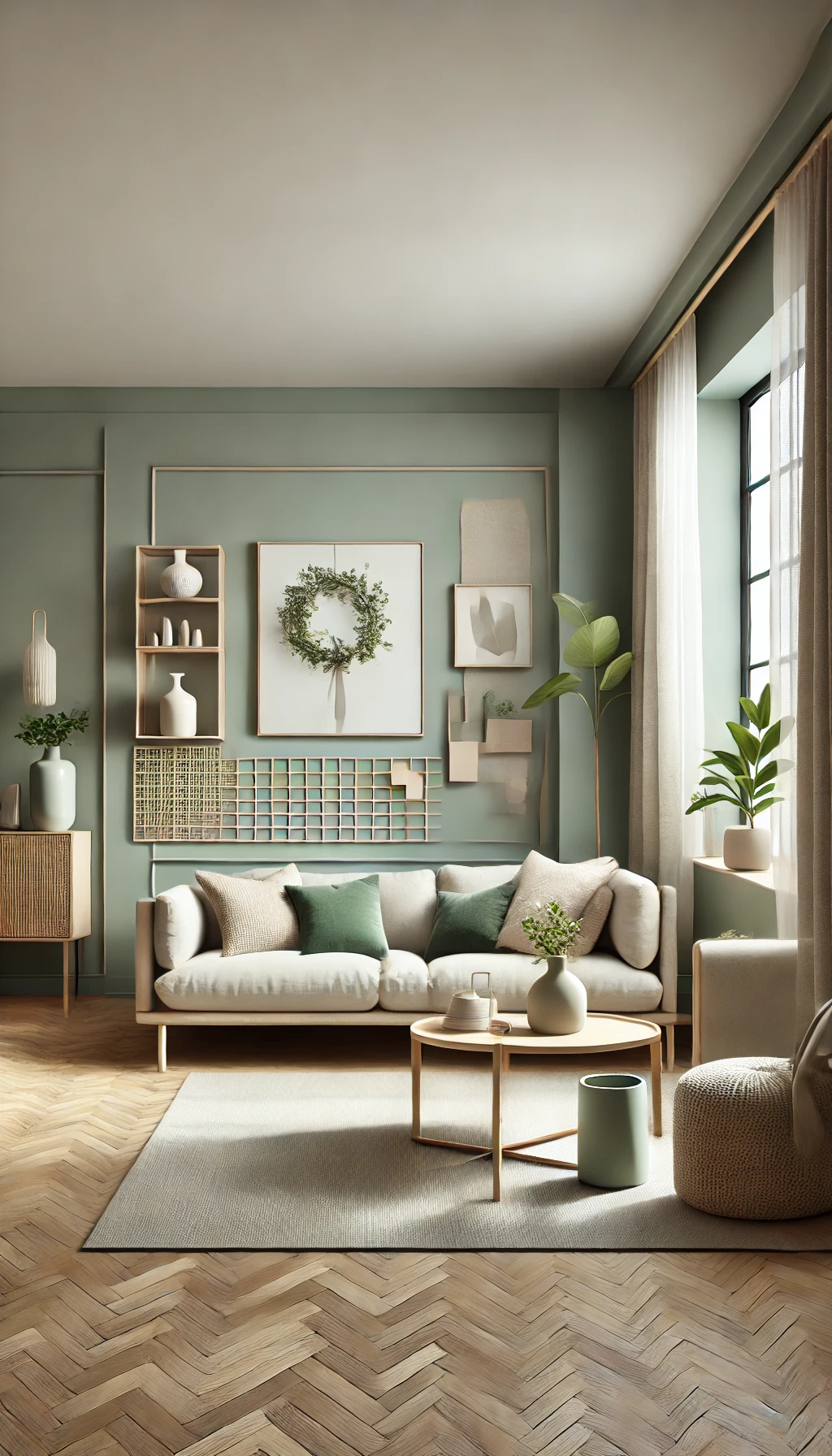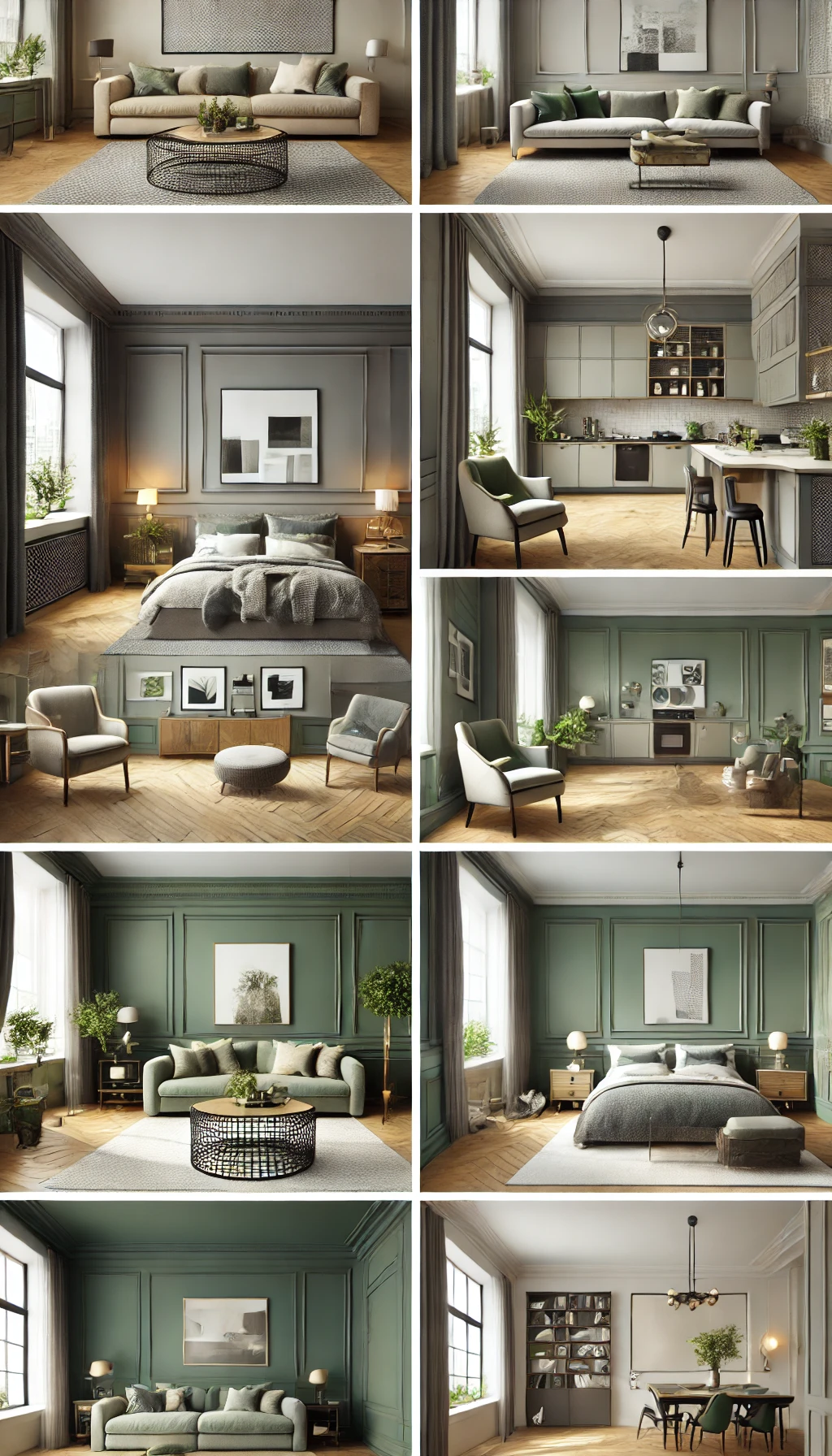Choosing the right paint color can transform a space, and green-gray is a shade that brings a perfect balance of sophistication and tranquility. After extensive research and testing, I’ve discovered the ideal green-gray paint color that works beautifully in various settings. If you’re looking for a timeless hue that blends seamlessly with modern and classic interiors, this guide will help you make an informed decision.

1. What Makes Green-Gray the Perfect Neutral?
Green-gray is a versatile color that combines the soothing properties of green with the subtle sophistication of gray. Unlike stark neutrals, green-gray offers depth and dimension, adapting effortlessly to different lighting conditions. This color can create a serene atmosphere while maintaining an elegant aesthetic. The muted tones make it ideal for homeowners who want a neutral palette but still desire a hint of color to add personality to their space. Additionally, green-gray has an organic, nature-inspired quality that makes a room feel more grounded and inviting.

2. The Perfect Green-Gray Paint Color
After testing numerous options, the standout shade is Benjamin Moore’s Revere Pewter. This soft, muted green-gray strikes the perfect balance between warm and cool tones. It adapts to different environments, appearing more gray in low light and slightly greener in natural daylight. Other noteworthy contenders include:
- Sherwin-Williams Evergreen Fog – A rich, earthy green-gray with warmth, ideal for creating a cozy and inviting atmosphere.
- Farrow & Ball Pigeon – A classic, slightly deeper green-gray with historic charm, adding character to traditional or rustic spaces.
- Behr Silver Drop – A lighter option that leans toward a subtle sage-gray, perfect for brightening up smaller rooms without feeling too stark.
3. How to Choose the Right Green-Gray for Your Space
To select the best green-gray shade, consider the following factors:
- Lighting Conditions – Natural vs. artificial light can affect how the color appears. North-facing rooms tend to pull out cooler tones, making some green-grays appear bluer, while south-facing rooms enhance warmth, bringing out earthy undertones.
- Undertones – Some green-grays have blue undertones (cooler) or yellow undertones (warmer). If you want a crisp and fresh look, opt for a cool undertone. If you prefer a cozy, inviting feel, choose a shade with warmer undertones.
- Complementary Colors – Green-gray pairs beautifully with crisp whites, warm beiges, deep blues, and muted gold accents. This allows for seamless coordination with furniture, decor, and textiles.
- Purpose of the Room – Consider the mood you want to create. A muted green-gray in a bedroom can enhance relaxation, while a bolder green-gray in a living room can make a statement.
4. Best Rooms to Use Green-Gray Paint
Green-gray is highly adaptable and works well in multiple spaces:

- Living Room – Creates a calming yet sophisticated backdrop for furniture and decor, making the space feel welcoming without overpowering the design.
- Bedroom – Enhances relaxation and pairs well with soft linens and wood tones, promoting restful sleep and a cozy atmosphere.
- Kitchen – Works beautifully on cabinetry or walls, complementing marble and quartz countertops, as well as brass or matte black fixtures for a high-end look.
- Bathroom – Adds a spa-like ambiance while maintaining a timeless appeal, especially when paired with white subway tiles and natural stone elements.
- Home Office – Aids concentration and focus by providing a serene yet sophisticated environment that isn’t too distracting.
5. Green-Gray in Different Design Styles
Green-gray is a chameleon color that adapts to various design aesthetics:
- Modern Farmhouse – Complements white shiplap, natural wood, and black fixtures, creating a cozy yet refined rustic charm.
- Minimalist – Provides a soft, neutral base that enhances simplicity, making clean lines and uncluttered spaces feel warm rather than stark.
- Traditional – Works well with classic moldings and antique furnishings, lending an elegant yet understated sophistication.
- Scandinavian – Pairs beautifully with light wood, neutral textiles, and muted color palettes, embracing a clean and airy aesthetic.
- Industrial – Softens the look of exposed brick, metal accents, and concrete elements, adding warmth to an otherwise raw and edgy space.

6. How to Test Paint Samples Like a Pro
Before committing to a full wall, test samples using these expert tips:
- Paint large swatches on different walls to see variations in lighting throughout the day. A 12×12-inch section is ideal for evaluating color.
- Observe the color at different times—morning, afternoon, and evening—to understand how it reacts to changing light conditions.
- Compare against flooring, furniture, and textiles to ensure cohesion. A green-gray that looks perfect in-store may shift when paired with your existing decor.
- Use peel-and-stick samples from paint brands to move the color around different areas before deciding.
7. Final Thoughts: Why Green-Gray is a Winning Choice
Green-gray is the ultimate versatile paint color that blends effortlessly into various interior styles. Its ability to shift between cool and warm tones makes it a timeless choice that won’t go out of style. Whether you’re redesigning an entire space or adding subtle elegance to a room, green-gray is a color worth considering.
By choosing the perfect shade and testing it properly, you can achieve a balanced and stylish interior that feels both inviting and refined. Happy painting!


